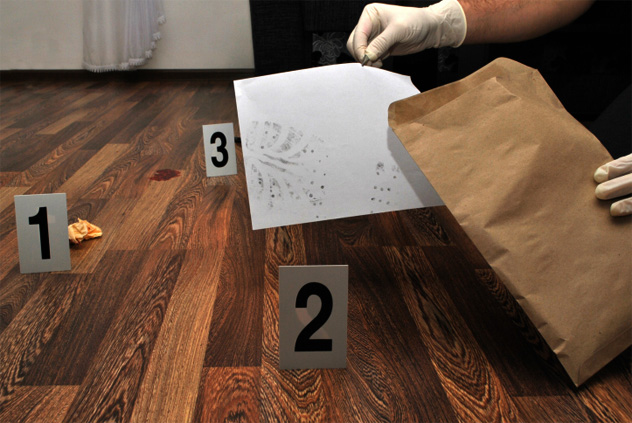10Murder In Suwon
On April 1, 2012, a shocking crime hit the South Korean city of Suwon. The perpetrator, a Chinese-Korean immigrant worker named Wu Yuanchun, abducted and killed a 28-year-old woman inside his house. When police arrived to apprehend Wu, they found that the victim’s body had been neatly chopped into almost 400 pieces. A public outcry was raised against the police after findings revealed that they had not responded promptly to the victim’s phone call for help, and that it had taken them half a day to finally find Wu’s house. Following a trial, a South Korean district court initially sentenced Wu to death, believing that he had dismembered the body in order to sell the parts. However, an appeals court later overturned that decision and had his sentence commuted to life. That decision—which was upheld by South Korea’s Supreme Court— triggered a series of national protests calling for the imposition of the death penalty. Although still legal, the death penalty has not been enforced in South Korea since 1997.
9The Soumya Murder Case
This incident, which happened on February 1, 2011, involved a one-handed Indian beggar and repeat offender named Govindachamy assaulting and raping a 23-year-old woman named Soumya. Riding together in a train at night, Govindachamy attempted to rob his fellow passenger in a deserted compartment. When Soumya resisted, Govindachamy slammed her head against a wall and flung her out of the train. He himself jumped out after her and walked back to where her half-dead body lay motionless beside the tracks. He then dragged her to a wooded area near the railway and sexually assaulted her. Soumya later succumbed to her wounds while being treated at the hospital. In the aftermath, authorities arrested Govindachamy and turned his case over to a fast-track court which found him guilty of the heinous crime and sentenced him to death. A higher court later upheld the verdict after he tried to appeal it, stating that his act was “repulsive to the collective conscience of society.”
8Murder Of Pai Hsiao-yen
An especially gripping tale of violence that rocked Taiwan came during the infamous murder of Pai Hsiao-yen. On April 14, 1997, a gang led by Chen Chin-hsing, Lin Chun-sheng, and Kao Tien-min kidnapped the 17-year-old student and only child of local celebrity Pai Ping-ping as she was walking to school. They then attempted to ransom her off for a whopping $5 million. Due to extensive media coverage, they changed the rendezvous point several times, but never showed up. At one point, they even sent Pai her daughter’s severed finger and a picture of the half-naked girl tied up as a grisly reassurance that the victim was still alive. That would turn out be a lie, however, as authorities who found the girl’s mutilated body in a drainage ditch during the last week of April stated that she may already have been dead during the ongoing ransom negotiations. Consequently, the public engaged in a massive protest against the government and the police for failing to rescue the victim. They also condemned the media, saying that their unnecessarily aggressive coverage contributed to the girl’s death. A nationwide manhunt later saw two of the ringleaders commit suicide before they could be caught. The third, Chen, was apprehended and executed in 1999.
7Yang Xinhai’s Murder Spree
Although his reign of terror spanned only three years, Yang Xinhai made up for the lack of time by killing an insanely large number of people, thus ensuring his infamy as one of China’s most prolific serial killers. The drifter and habitual offender started his killing spree in 2000 after he served time in a labor camp for rape charges. His victims usually consisted of farmers and villagers living in rural areas. After staking out his target’s home, he would enter at night and kill his victims (and sometimes their families) using hammers, shovels, or axes. Yang repeated his modus operandi throughout four provinces, resulting in the deaths of more than 60 people. His grisly career came to an end when authorities finally caught him in 2003. A court convicted Yang of the murders and had him executed on February 14, 2004. While Yang’s true motives were never found out, it was speculated that he may have snapped after his girlfriend left him. On the other hand, maybe he really was just a deranged psychopath who enjoyed killing.
6The Murder Of Atlantuya Shaariibuu
One of the most controversial political scandals to ever hit Malaysia came on the heels of the particularly gruesome murder of Mongolian national and translator Atlantuya Shaariibuu in 2006. Years before her untimely death, she became the mistress of Abdul Razak Baginda, a powerful aide to Prime Minister Najib Razak. As the story went, in 2002, Shaariibuu helped Baginda broker a shady deal that involved the purchase of two French submarines worth $2 billion. Shaariibuu—having broken up with Baginda at some point—went to his house in Kuala Lumpur in 2006 for her share, only to be denied by Baginda’s wife. After being hounded by his ex-mistress for several days, Baginda sent for two bodyguards from the prime minister’s camp to deal with her. The two men shot and killed Shaariibuu before blowing up her corpse with C-4. Although authorities arrested Baginda and the two bodyguards, all three were later acquitted in what some have called “a national embarrassment.”
5The Murder Of Lucila Lalu
One of the Philippines’ longest-running unsolved murder cases started after a garbage man in Manila discovered a cleanly severed pair of legs cut into four pieces in a pile of trash on May 30, 1967. The day after, authorities found a headless torso in another area of the city and established that all those body parts belonged to a 29-year-old woman named Lucila Lalu, the owner of a local beauty shop and bar. Initially, authorities suspected Lalu’s husband of committing the crime, as he knew that Lalu had a few lovers on the side. However, a dental student and boarder above Lalu’s beauty parlor named Jose Santiano confessed to killing her after the latter attempted to seduce him. In another bizarre twist, Santiano later withdrew his confession and stated he had been forced by the real killers to play the fall guy. Although convicted by a court, Santiano was later acquitted by the Court of Appeals after the judges noted several irregularities in his confession. They also believed that the dental student didn’t possess the skill necessary for the surgical dismemberment carried out on the victim’s corpse.
4The Geylang Bahru Family Murders
In yet another unsolved case involving an extremely brutal murder, an unknown assailant killed all four children of the Tan family inside their flat in Geylang Bahru, Singapore on the morning of January 6, 1979. Both the parents (who operated a mini-schoolbus) had gone off to work when the murders took place. Already suspicious because the children weren’t answering their calls or responding to a neighbor’s knocks on their door, the parents returned home to the horrific scene of their lifeless children’s mutilated bodies stacked on top of each other inside the bathroom. Authorities who investigated the scene failed to find the murder weapon, but noted that there was no sign of breaking and entering. They also saw strands of hair on the eldest child’s hands, suggesting that he may have fought back. Although two women were detained and questioned, they were later released. To this date, the gruesome murder has remained unsolved.
3The Mona Fandey Murder
This incident may be one of the few times in history that we actually had a reason to support a witch trial. On July 1993, Malaysian witch doctor Maznah Ismail, her husband Mohd Affandi Abdul Rahman, and their assistant brutally murdered a politician who had sought their help to boost his career. Popularly known as Mona Fandey during her glory days as a singer and dancer, Ismail later became a witch doctor and consultant to a who’s who of VIPs. One of them would be her ill-fated victim, state assemblyman Mazlan Idris. After the trio convinced the politician to lie down and close his eyes for a ritual inside their home, they lopped his head off and mutilated his body, chopping it into 18 pieces and burying it in a nearby hole. They then took his money and went on a shopping binge in Kuala Lumpur. Two years later, a court found them guilty of the murder and sentenced them to death. The three were finally hanged on November 2001, with no signs of regret whatsoever prior to their execution.
2The Hello Kitty Murder
Like something straight out of a creepy urban legend, three Hong Kong gangsters—Chan Man-lok, Leung Shing-cho, and Leung Wai-lun—stuffed the skull of their victim inside a large Hello Kitty doll. The victim was 23-year-old Fan Man-yee, who had been kidnapped in March 1999 over a financial dispute. For over a month, the gang members tortured Fan regularly, beating her with steel bars and pouring hot plastic on her limbs. After she succumbed to her injuries, the gangsters disposed of her body by dismembering it and boiling the pieces. In one instance, they boiled her head while cooking noodles on the adjoining burner, and even used the same chopsticks to stir both. The gruesome murder only came to light after one of the gangsters’ girlfriends—who had also participated in the torture—revealed everything to authorities after she experienced nightmares over the incident. Subsequently, police arrested the three and a court sentenced them all to life imprisonment with no parole eligibility for two decades.
1The Murder Of Junko Furuta
No person should have to suffer such depravity as that experienced by Japanese student Junko Furuta. On November 25, 1988, four young hooligans abducted the 17-year-old while she was walking home from classes and kept her in one of their homes. They made the victim tell her parents that she was staying with her friends, then subjected her to every imaginable form of torture for six weeks. Besides the usual rape and beatings, the boys mutilated her genitals with firecrackers and pliers. They also made her consume roaches and drink her own urine. After she attempted to escape, they burned her legs and ripped her nails out. Meanwhile, the parents of the boy who owned the house knew about everything, yet did not tell the authorities because they feared their son and his group. Junko’s ordeal became so unbearable that at one point she pleaded with the boys to just kill her. She did finally die a few days later. Subsequently, they stored her body in a concrete-filled drum and left it in a vacant lot. The saddest part of this whole story is that, as minors, the boys received relatively light sentences—a mere slap on the wrist for such a heinous act. Marc V. is always open for a conversation, so do drop him a line sometime.
























